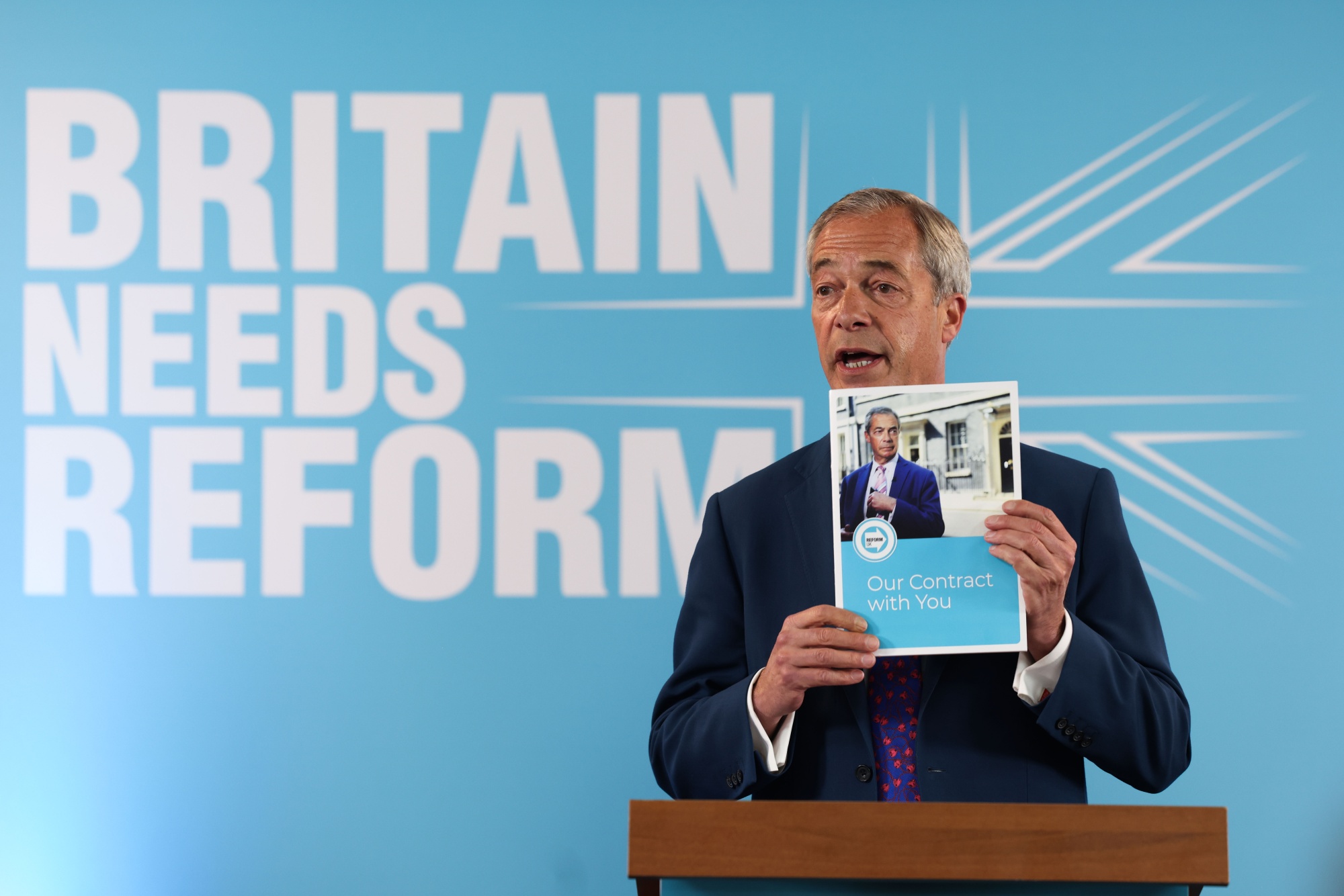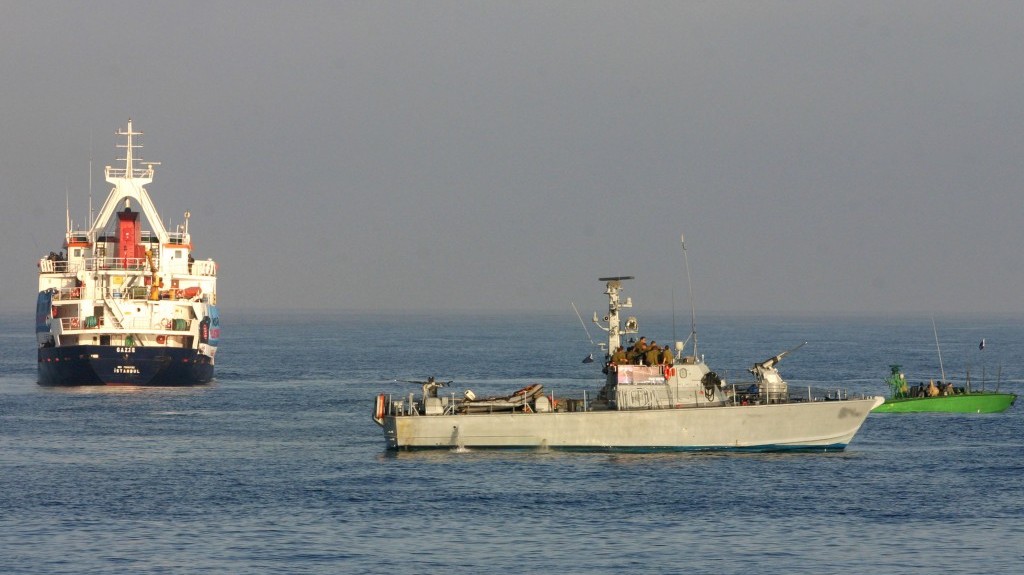Offshore Wind Farms: Rising Costs And Investor Concerns

Table of Contents
Escalating Supply Chain Costs and Inflation
The dramatic increase in the cost of constructing offshore wind farms is significantly driven by escalating supply chain costs and persistent inflation. This impacts every aspect of project development, from initial planning to final commissioning.
Material Price Increases
Inflation has severely impacted the price of essential materials for offshore wind farm construction.
- Steel: The price of steel, a critical component in turbine towers and foundations, has seen substantial increases, often exceeding 50% in recent years. This is due to factors such as increased global demand and disruptions in the global steel supply chain.
- Concrete: Similarly, the cost of concrete, used extensively in the construction of foundations and substructures, has also risen sharply. This is compounded by increased transportation costs and the need for specialized concrete mixes suitable for offshore environments.
- Rare Earth Minerals: The production of wind turbine generators relies heavily on rare earth minerals. Price volatility and geopolitical instability in the sourcing of these minerals add significant cost uncertainty to projects.
These material price increases, coupled with supply chain bottlenecks resulting from global disruptions, have created significant challenges in securing materials on time and within budget, directly contributing to higher overall project costs.
Labor Shortages and Increased Labor Costs
The construction and maintenance of offshore wind farms require a highly skilled workforce, leading to significant labor shortages and increased labor costs.
- Specialized Skills: Offshore wind farm projects demand specialized skills in areas such as electrical engineering, marine engineering, and heavy lifting operations. Finding and retaining these skilled workers is increasingly difficult.
- Competition for Workers: The growing renewable energy sector is creating intense competition for skilled labor, driving up wages and benefits packages. This increases the overall labor cost component of offshore wind farm projects substantially.
- Health and Safety Regulations: Stringent health and safety regulations in the offshore environment add to labor costs through increased training requirements and safety precautions.
These labor-related challenges further exacerbate the already high costs associated with developing and maintaining offshore wind farms.
Technological Challenges and Development Costs
Technological advancements in offshore wind turbine technology, while promising increased energy generation, also contribute to higher costs.
Turbine Technology and Size
The relentless drive to increase energy output has resulted in the development of larger and more complex wind turbines.
- Manufacturing Costs: The manufacturing of these massive turbines, with their longer blades and more sophisticated internal components, is significantly more expensive. This includes specialized manufacturing facilities and logistical challenges.
- Installation Costs: Installing these giant structures in challenging offshore environments requires specialized vessels and highly skilled crews, leading to high installation costs. This also includes the associated risks and insurance premiums.
- Transportation Challenges: The sheer size and weight of modern wind turbines present significant logistical challenges, especially in transporting them to offshore locations.
The increased size and complexity translate directly into higher manufacturing, installation, and transportation costs.
Grid Connection and Infrastructure Development
Connecting offshore wind farms to the onshore electricity grid is a major undertaking that often involves substantial infrastructure development.
- Substations and Transmission Lines: Significant investment is required to build new substations and high-voltage transmission lines to carry the electricity generated by offshore wind farms to the onshore grid.
- Cable Laying and Subsea Infrastructure: Laying cables across the seabed requires specialized vessels and expertise, significantly increasing costs. This also incorporates ongoing maintenance of these underwater cables.
- Permitting and Regulatory Approvals: Securing the necessary permits and approvals for grid connection projects can be a lengthy and complex process, leading to delays and added expenses.
The cost of grid connection infrastructure adds substantially to the overall expense of offshore wind farm projects.
Permitting, Regulatory Hurdles, and Environmental Concerns
Navigating the regulatory landscape and addressing environmental concerns adds considerable time and expense to offshore wind farm projects.
Lengthy Permitting Processes
Obtaining the necessary permits and approvals for offshore wind farm projects can be a protracted and complex process.
- Multiple Regulatory Bodies: Projects typically require approvals from numerous federal, state, and local regulatory bodies, each with its own requirements and timelines.
- Environmental Impact Assessments: Thorough environmental impact assessments are mandatory, requiring extensive studies and potentially leading to costly mitigation measures.
- Stakeholder Engagement: Consultation with stakeholders, including local communities, fishing interests, and environmental groups, can be a time-consuming process.
These delays in obtaining permits translate directly into increased project financing costs and extended project timelines.
Environmental Impact Assessments and Mitigation Costs
Minimizing the environmental impact of offshore wind farms is paramount, but comes at a cost.
- Environmental Surveys: Comprehensive environmental surveys are needed to assess the potential impact on marine life, including birds, marine mammals, and fish populations.
- Mitigation Measures: Mitigation measures, such as bird deterrent systems and measures to protect marine mammals, can be expensive to implement.
- Potential Conflicts with Other Users: Offshore wind farms may conflict with other marine users such as fishing, shipping, and recreational activities, necessitating further mitigation and negotiation.
The costs associated with environmental impact assessments and mitigation measures add significant expense to the overall project budget.
Investor Sentiment and Risk Assessment
The escalating costs of offshore wind farm projects are impacting investor sentiment and driving up risk assessments.
Decreased Returns on Investment
Rising costs directly reduce the projected returns on investment for offshore wind projects.
- Project Financing Challenges: Securing project financing becomes more difficult as costs escalate, leading to higher interest rates and stricter lending terms.
- Investor Appetite: Investors are becoming more cautious about offshore wind investments due to the increased cost uncertainty and potential for cost overruns.
- Competition for Funding: The renewable energy sector is attracting significant investment, creating competition for limited funding, which pushes up financing costs.
The diminished returns and increased risk profile make it challenging to attract and secure sufficient investment for new projects.
Financial Modeling and Risk Mitigation Strategies
Investors are increasingly focusing on rigorous financial modeling and risk mitigation strategies.
- Hedging Strategies: Investors are utilizing hedging strategies to mitigate price volatility in materials and other inputs.
- Risk Transfer Mechanisms: Insurance and other risk transfer mechanisms are being employed to reduce the financial impact of potential delays or cost overruns.
- Accurate Cost Forecasting: Advanced cost forecasting techniques and detailed project management are becoming crucial to improve cost control and accuracy.
Sophisticated financial modeling and risk mitigation strategies are essential to ensuring the financial viability of offshore wind farm projects.
Conclusion
Rising costs in the offshore wind farm sector are a complex issue stemming from escalating supply chain costs, technological challenges, regulatory hurdles, and environmental concerns. These factors collectively impact investor confidence and create a challenging environment for attracting and securing investment. The industry needs to address these cost drivers through improved supply chain management, technological innovation, streamlined permitting processes, and more efficient project management. Learn more about the future of offshore wind farm development and investment by exploring [link to relevant resource].

Featured Posts
-
 Nigel Farages Shrewsbury Visit Flat Cap G And T And Conservative Criticism
May 03, 2025
Nigel Farages Shrewsbury Visit Flat Cap G And T And Conservative Criticism
May 03, 2025 -
 The Fall Of School Desegregation Orders A Look At The Justice Departments Decision
May 03, 2025
The Fall Of School Desegregation Orders A Look At The Justice Departments Decision
May 03, 2025 -
 Exec Office365 Breach Millions Made By Hacker Feds Say
May 03, 2025
Exec Office365 Breach Millions Made By Hacker Feds Say
May 03, 2025 -
 Why Reform Uk Might Fail Five Potential Pitfalls
May 03, 2025
Why Reform Uk Might Fail Five Potential Pitfalls
May 03, 2025 -
 Gaza Flotilla Under Attack Watch Live Updates From Malta
May 03, 2025
Gaza Flotilla Under Attack Watch Live Updates From Malta
May 03, 2025
